Deep-sea creatures: Brittle sea star and other unusual fishy finds
- Published
- comments
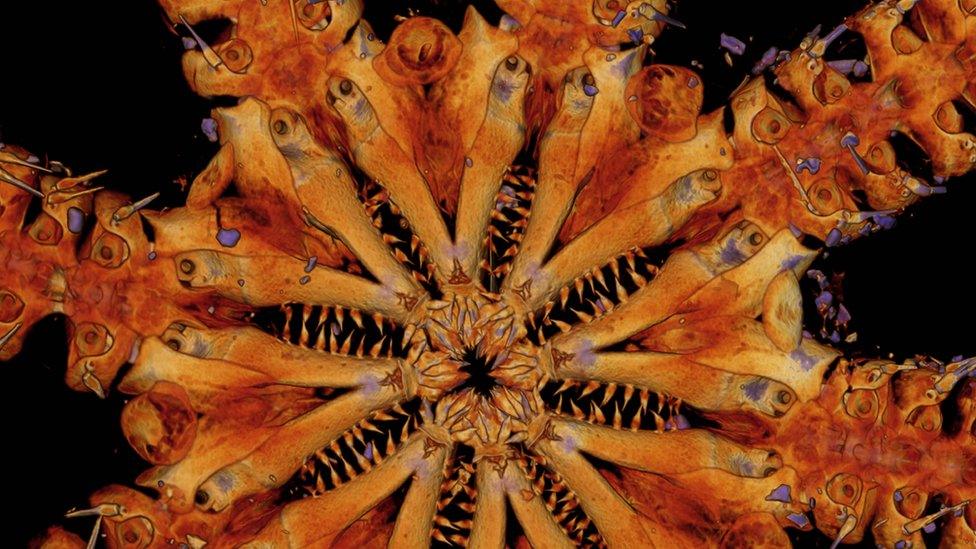
Take a look at this close up image of the Ophiojura exbodi's teeth! Now that's jaw-some!
Meet the Ophiojura exbodi - a new species of brittle sea star that dates back to the Jurassic period.
This unusual deep sea creature has a thorny nest of teeth, eight arms and thousands of tiny 'snouts' - like a pig - on its arms.
It was first discovered by Dr Tim O'Hara who was sorting through preserved creatures from a mission to New Caledonia in the South Pacific Ocean.
"Brittle stars always have five, a few have six, and the very odd one has more than 10," said Dr O'Hara, "to suddenly have eight arms? That was special."
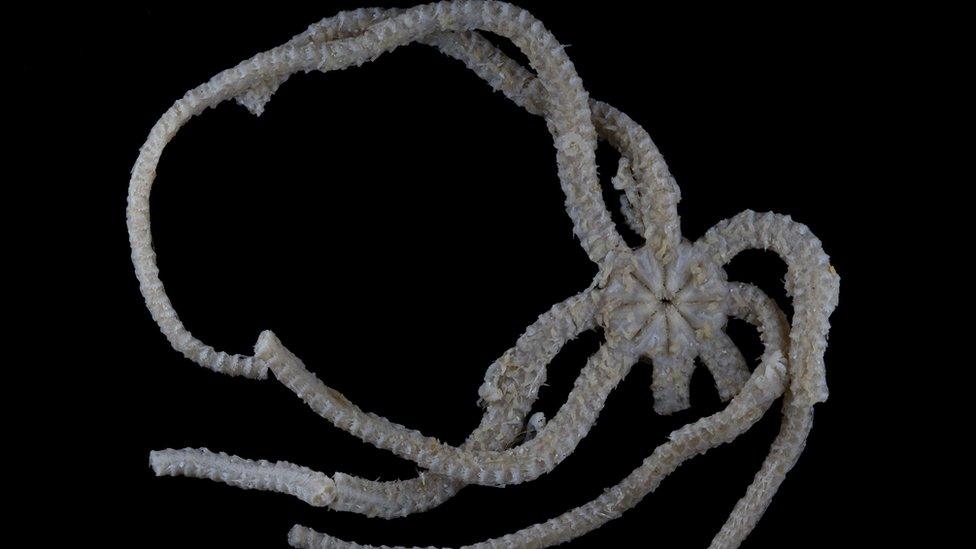
A picture of the preserved Ophiojura exbodi
He got in touch with his friend Dr Ben Thuy, a palaeontologist at the National Museum of Natural History, in Luxembourg to help him identify the mysterious sea star.
What they discovered was that not only was it a new species, but an entirely new family of brittle sea stars!
Well, if you think the Ophiojura exbodi is cool, we thought we'd check out some other weird and wonderful creatures of the deep...
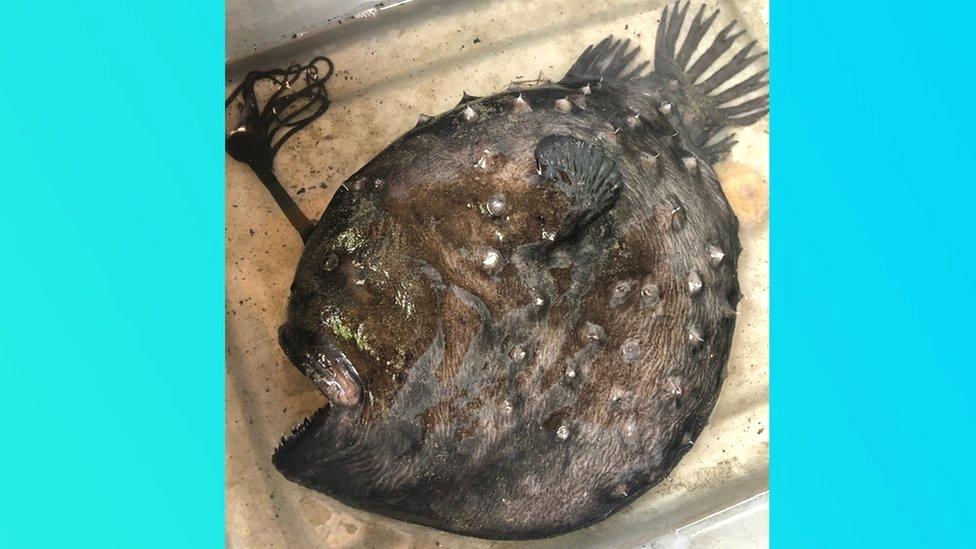
The Pacific footballfish is a species of Anglerfish that lives in the deepest parts of the ocean
Nope, it's not a monster, an alien or a football, check out this incredible fishy find on a beach in California, USA.
This unusual-looking deep sea creature is a Pacific footballfish, one of around 300 species of Anglerfish, which are known for their huge mouths full of sharp teeth and glowing antennae, used to lure in their prey.
The fish was found on Newport Beach by beachgoer Ben Estes who snapped a picture of it and informed wardens in the Crystal Cove State Park.
It's very rare to find deep sea fish washed up on beaches like this, as they usually live around 2,000-3,000ft (around 900m) below sea level.
The fish has now been collected and frozen, and the LA county Natural History Museum have been in touch to see if they can add it to their collection.
Vampire squid
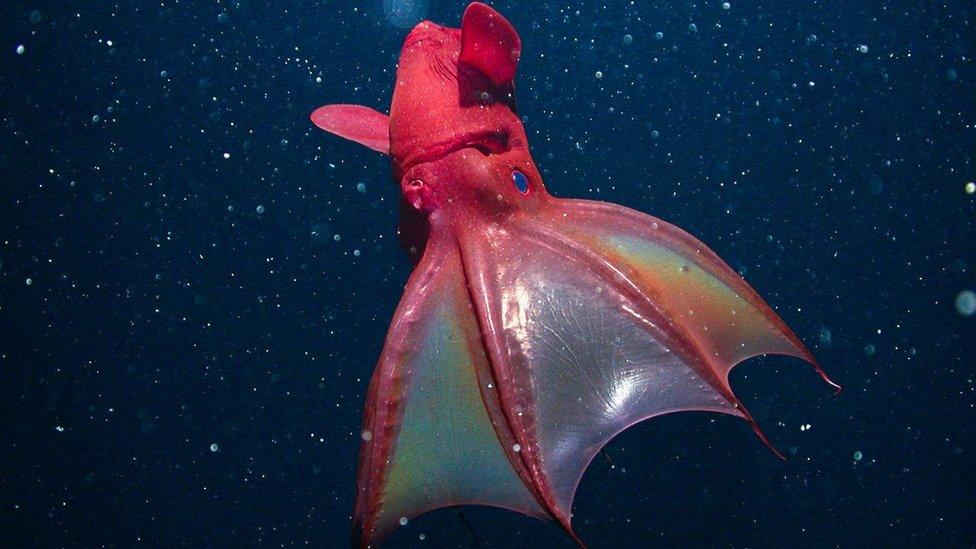
Behold the Vampyroteuthis infernalis - which literally translates to: Vampire squid from hell!
It might look spooky, but the vampire squid is actually pretty tiny, measuring in at around 30cm long.
It gets its name from its glowing eyes and webbed arms - which people say looks like a vampire's cape - and are covered in spines called 'cirri'.
If it feels threatened, the vampire squid will turn it's 'cape' inside out and squirt out a sort of bioluminescent mucus, full of glowing photophores, to dazzle and confuse the predator whilst it makes a speedy getaway.
The vampire squid lives on a diet of something called 'marine snow', which is basically a combination of poo, snot and dead fish bits - ewww!
Although it looks similar to both squid and octopuses, it actually belongs to neither family, and is instead part of the Vampyromorphida order of cephalopods.
The creature can be found living in tropical waters, around 600-900 metres below sea level in something called the oxygen minimum zone.
Frilled Shark
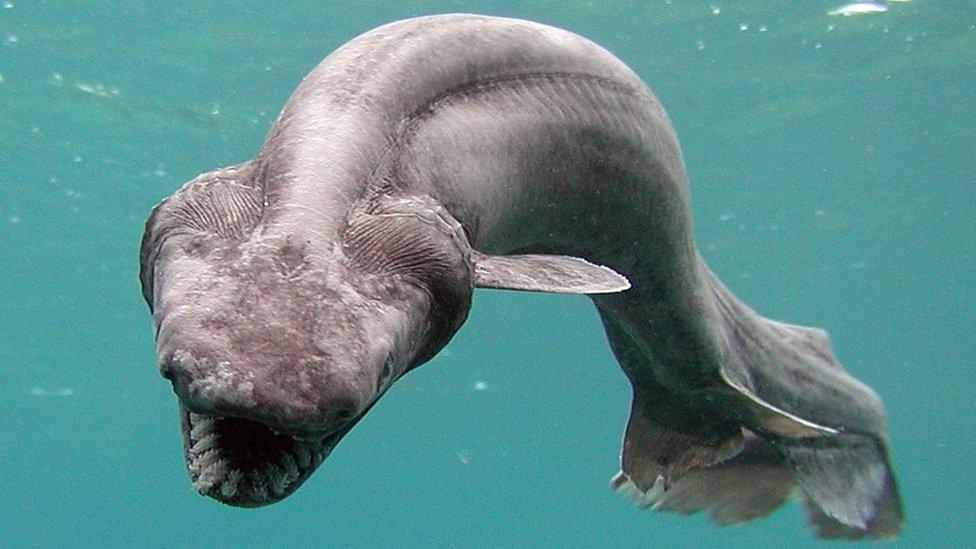
Also known as a 'living fossil', because it has changed so little since the prehistoric times, the frilled shark is another wonder of the deep-sea.
The frilled shark, or Chlamydoselachus anguineus, gets its name from its frilly gills which it uses to breathe, and its long eel-like or 'snaky' appearance.
In fact the frilled shark can grow to be two metres long, and can be found at depths of around 660 metres below sea level.
As well as this, it has 25 rows of backward-facing, needle-sharp teeth (around 300 in total!) meaning that once it bites hold of something, it would be very difficult to get back out again - thank goodness its favourite food is squid!
Hagfish
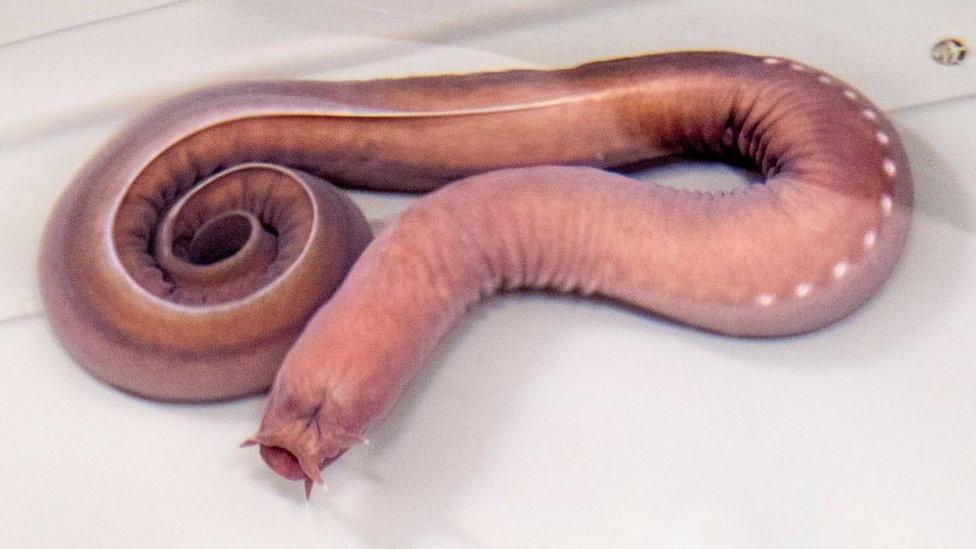
Nope, that's not a swimming sausage, it's a hagfish.
The hagfish is a spineless creature that lives at the bottom of the ocean, and has been around for 500 million years.
A bit like Doctor Who, it has more than one heart, four in fact, and is so flexible it can literally tie itself in knots.
The hagfish also has a unique way of defending itself from predators, by using the power of slime...
Watch the hagfish slime in action
The hagfish's slime is so strong and stretchy that scientists believe it could be turned into tights, breathable athletic wear or even bullet-proof vests in the future.
Japanese spider crabs

These gentle giants of the deep-sea are Japanese spider crabs.
Of the 60,000 species of crustaceans on Earth, the Japanese spider crabs are the largest, measuring up to 3.7 metres from the tip of one claw to the other.
Japanese spider crabs are also part of a group known as 'decorator crabs', which like to dress-up their shells with things like sponges or anemones for camouflage. However, adult crabs don't tend to do this as much, as their giant size means they don't really have any predators to hide from.
The crabs have been known to live up to 100 years, and can even re-grow any of their 10 legs when they moult - pretty impressive!
What do you think of these spectacular deep sea creatures? Let us know your fave in the comments.
- Published6 March 2021
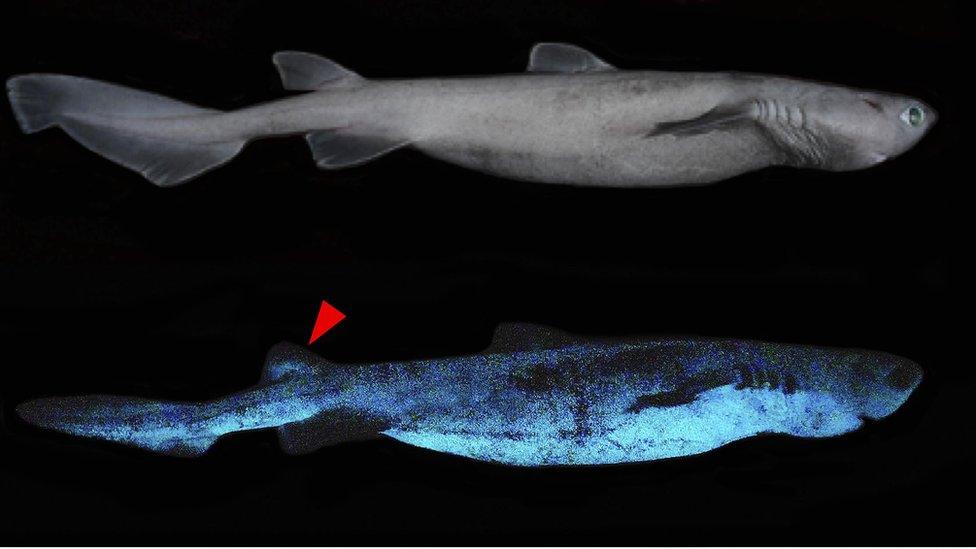
- Published26 January 2019

